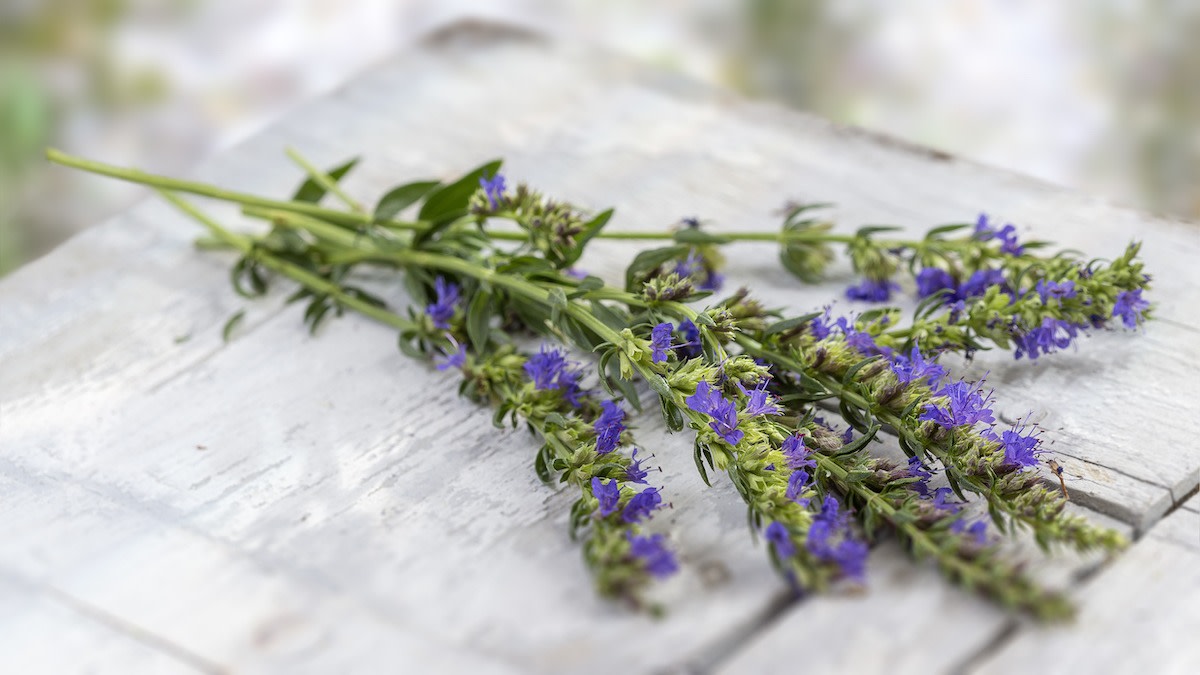How to Use Culinary Hyssop: 8 Ways to Cook With Hyssop
Written by MasterClass
Last updated: Aug 26, 2021 • 2 min read
There are many plants in an herb garden that have more than just a culinary use. Since the eighth century B.C., people have touted the many benefits of hyssop, a medicinal herb that works wonders in both your kitchen and your medicine cabinet.
Learn From the Best
What Is Hyssop?
Hyssop, or hyssopus officinalis, is an herbaceous plant that belongs to the Lamiaceae (the common name for a member of the mint family). The plant thrives in warm climates under full sun and is native to the Middle East and Southern Europe. Hyssop comes from the Hebrew word “ezob,” which translates to “holy herb.” Its leaves are dark green and during the summer, the plant produces fragrant pink, blue, and purple flowers.
The History of Hyssop
Hyssop produces an essential oil, which is extracted from the hyssop flowers and leaves, has been an apothecary and culinary staple since classical antiquity, including in ancient Egypt, Israel, and Greece.
The Romans believed hyssop protected them from plagues, and many people hung dried hyssop in their homes to ward off the “evil eye” and keep out negativity. The word “hyssop” itself appears in the Bible numerous times in reference to cleanliness and ritual sacrifice, though researchers suggest that it refers not to the hyssop plant as we currently know it today, but to another similar herb or small plant.
What Does Hyssop Taste Like?
Hyssop is part of the mint family, and tastes like mint but with floral overtones—like a minty lavender—but with a slight bitterness. Hyssop’s fresh, bright flavor makes it a great addition to lighten up dishes, particularly vegetable-forward meals.
8 Ways to Incorporate Hyssop in Cooking
- 1. Steam fresh hyssop leaves to lessen the intensity and bitterness and add them to salads, broths, and soups.
- 2. Sprinkle dried hyssop over roasted vegetables or mix it into your ratatouille or caponata.
- 3. Use hyssop in place of some or all of the mint in a recipe, like when braising lamb.
- 4. Dried hyssop can be used to make an infusion for cocktails or simply to make tea.
- 5. Sprinkle fresh leaves over pasta dishes.
- 6. Add fresh hyssop, either the whole plant or chopped leaves, to your chicken before roasting with lemon.
- 7. Serve fresh leaves with soft cheeses like goat cheese and cottage cheese.
- 8. Mix 1-2 drops of hyssop oil into a smoothie.
Become a better chef with the MasterClass Annual Membership. Gain access to exclusive video lessons taught by culinary masters, including Alice Waters, Dominique Ansel, Gordon Ramsay, Chef Thomas Keller, and more.
